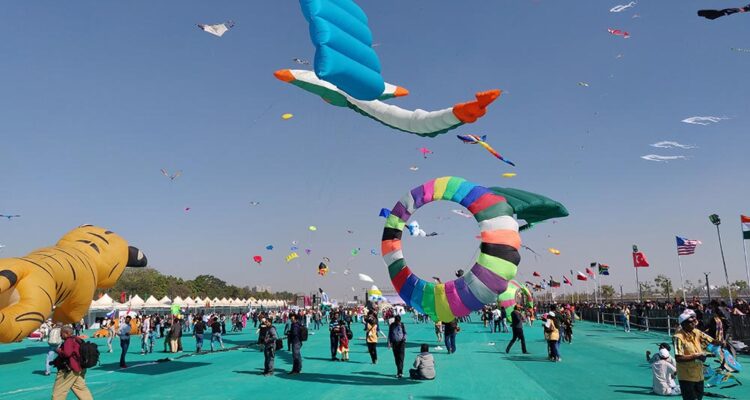Organizing an International Kite Festival requires careful planning and coordination to ensure a successful and enjoyable event. Here are some steps to help you get started:
- Define the Purpose and Scope:
Determine the objective of the festival. Is it to promote cultural exchange, showcase kite traditions, or simply celebrate the joy of kite flying?
Decide on the scale of the event. Will it be a local, regional, or international festival?
2. Form an Organizing Committee:
Create a dedicated team responsible for organizing and managing the festival.
Assign specific roles and responsibilities to committee members, such as logistics, marketing, finance, permits, and participant coordination.
3. Budgeting and Sponsorship:
Develop a comprehensive budget that includes all anticipated expenses, such as venue rental, equipment, marketing, security, permits, and participant accommodations.
Seek sponsorship and funding from government bodies, private organizations, and potential partners who may be interested in supporting the event.
4. Date and Venue Selection:
Choose suitable dates for the festival, considering weather conditions and local events or holidays.
Identify an appropriate venue with ample space for kite flying and spectator viewing.
Ensure the venue has necessary amenities like parking, washrooms, and facilities for food and beverage vendors.
5. Participant Invitation and Registration:
Create a registration process for kite enthusiasts, kite flyers, and kite-making artisans to participate in the festival.
Promote the event through various channels, including social media, websites, and local and international kite-flying communities.
Provide clear instructions and guidelines for participants, including rules, safety regulations, and any specific requirements.
6. Event Programming:
Plan a diverse range of activities and attractions to engage participants and visitors, such as kite-flying demonstrations, competitions, workshops, cultural performances, and food stalls.
Arrange for guest speakers, experts, or artists to provide educational sessions or demonstrations related to kite traditions and craftsmanship.
Consider incorporating live music, cultural displays, and entertainment to enhance the festive atmosphere.
7. Logistics and Operations:
Secure necessary permits and licenses from local authorities and agencies.
Arrange for the setup and layout of the festival area, including kite-flying zones, seating areas, and vendor stalls.
Coordinate with local authorities and emergency services to ensure adequate security and medical support during the event.
Arrange for transportation, accommodation, and hospitality for international participants, if required.
8. Marketing and Promotion:
Develop a comprehensive marketing plan to create awareness and attract participants and visitors.
Utilize various marketing channels, such as social media, websites, print media, radio, and partnerships with local businesses and tourism boards.
Design visually appealing promotional materials, including posters, banners, and flyers, that highlight the unique aspects of the festival.
9. On-Site Management:
Ensure smooth operations during the festival, including registration, participant coordination, and kite-flying zone management.
Provide adequate facilities for visitors, such as seating areas, restrooms, food and beverage vendors, and waste management services.
Have a dedicated team of volunteers or staff to assist with crowd management, safety, and information services.
10. Evaluation and Feedback:
Collect feedback from participants, visitors, and stakeholders to assess the success of the festival. Analyze the strengths and weaknesses of the event and identify areas for improvement in future editions.
Express gratitude to sponsors, participants, and volunteers for their contributions.
Organizing an International Kite Festival requires meticulous planning, effective communication, and collaboration with stakeholders. By following these steps and ensuring attention to detail, you can create a vibrant and memorable event that celebrates the art and joy of kite flying while promoting cultural exchange and community engagement.

